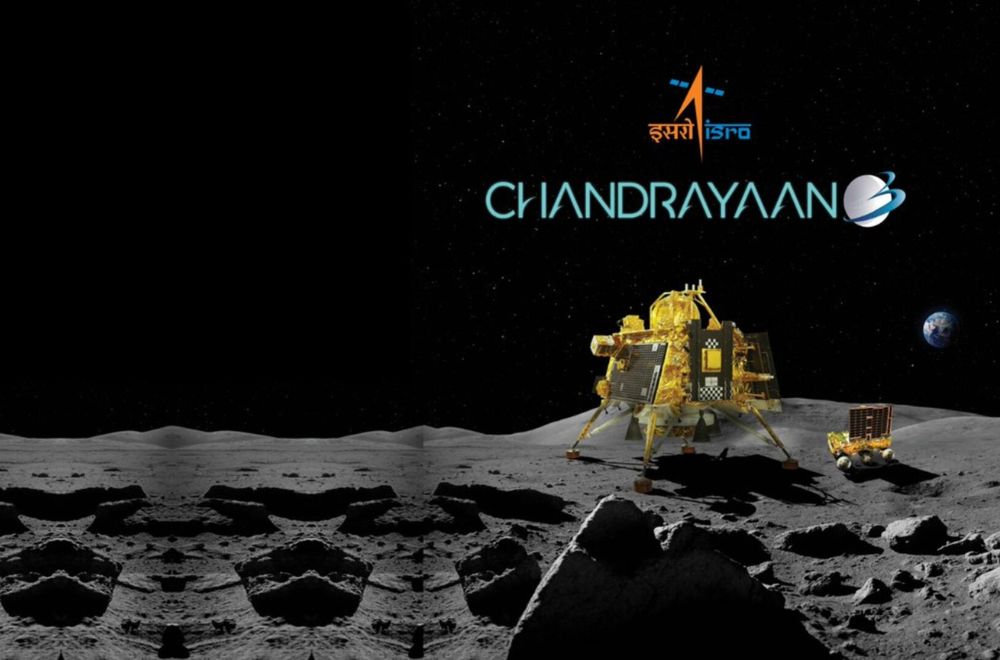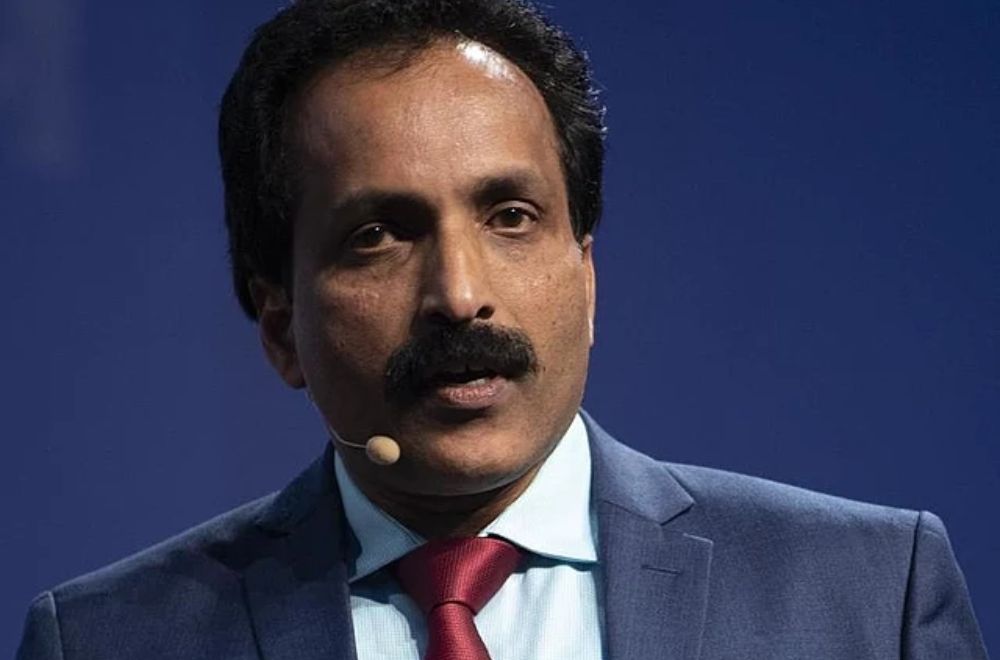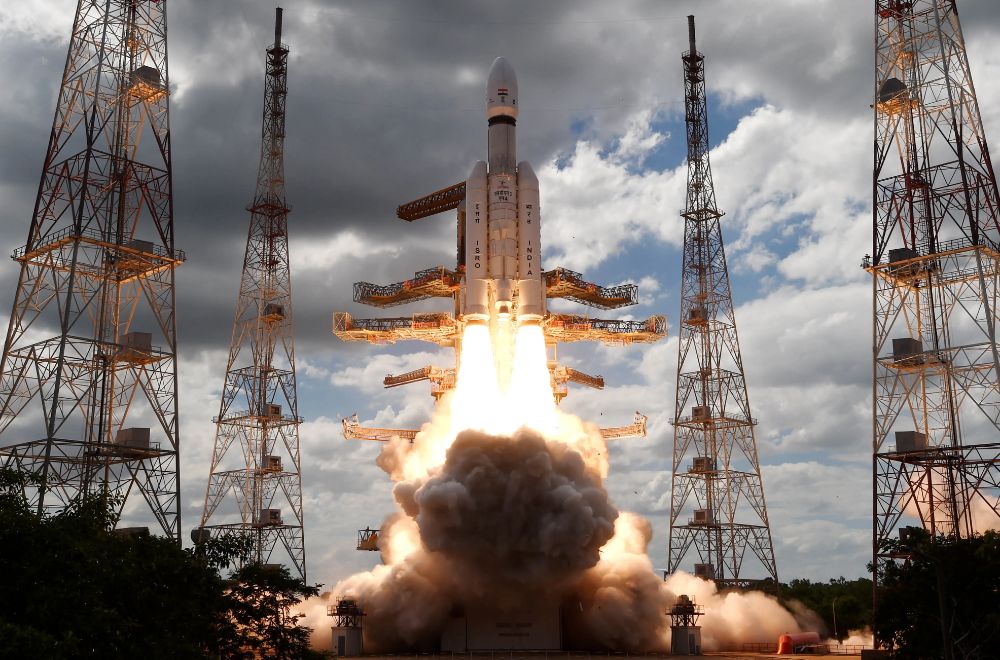Introduction
On the 23rd of August, India witnessed a momentous occasion as it celebrated the inaugural ‘National Space Day’, a day dedicated to honoring the country’s achievements in space exploration and technology. The announcement was made by none other than Prime Minister Narendra Modi himself, who also shared exciting updates about the upcoming Chandrayaan-3 mission in his address. This day not only marks a significant leap in India’s space endeavors but also emphasizes the nation’s commitment to scientific progress and innovation.
India will observe August 23 as “National Space Day” to honor the success of Chandrayaan-3, Prime Minister Modi announced on Saturday. Prime Minister Narendra Modi commended ISRO scientists for inspiring a generation and creating a lasting impression on children’s brains while speaking to a group of ISRO scientists in Bengaluru.
You took ‘Make in India’ to the moon,” PM Modi remarked in an address to ISRO scientists in Bengaluru, praising the scientists who helped lead India’s successful trip to the moon.
Moon’s Tiranga point
PM Modi declared that the location of the Vikram lander’s landing will be known as “Shivshakti” in honor of the success of the Chandrayaan-3 lander. While speaking to scientists at the ISRO Telemetry Tracking & Command Network Mission Control Complex in Bengaluru, the Prime Minister revealed the name of the location.
Prime Minister Modi’s Address
Prime Minister Modi praised the accomplishments of the Indian Space Research Organisation (ISRO) and its steadfast commitment to space exploration in a passionate address that enthralled the entire country. He discussed India’s space history, beginning with its first satellite, Aryabhata, and ending with its most recent Mars Orbiter Mission (Mangalyaan), which made India the first Asian country to enter Mars orbit and the fourth space agency worldwide. In addition to highlighting ISRO’s accomplishments, Modi’s address highlighted the difficulties it has overcome and the fortitude it has shown.
Chandrayaan-3 Mission: A Bold Step Forward
A major focus of Prime Minister Modi’s speech was the introduction of the eagerly anticipated Chandrayaan-3 mission. This mission seeks to land a rover on the lunar surface, thereby improving India’s status as a major contender in the field of space exploration.
It builds on the accomplishments and lessons learnt from Chandrayaan-2. An important milestone for the Chandrayaan-2 project was the orbiter’s successful entrance into lunar orbit. And the finding of water molecules on the Moon’s surface. India is prepared to take a new step in lunar exploration with Chandrayaan-3.
ISRO’s Latest Developments
In his speech, Prime Minister Modi also emphasized a few of ISRO’s most recent successes. ISRO has been steadily broadening its horizons, from launching satellites for multiple uses, such as communication, navigation, and remote sensing, to contributing to international space endeavors. The Prime Minister praised ISRO’s efforts to make space technology available to and useful for regular people, particularly in areas like agriculture, disaster management, and communication.
What will happen to India’s Moon mission next?
The search for water-based ice, which could one day enable human habitation on the Moon, is one of the mission’s main objectives. Additionally, it might be used to refuel spaceships traveling to Mars and other far-off planets. There is a sizable surface region that remains permanently under darkness, according to scientists, and it may contain water ice stores.
Both the lander and the rover are equipped with five scientific equipment that will assist researchers learn more about the Moon’s surface’s tectonic activity, atmosphere, and physical properties.
The rover is flying the Indian flag, and Isro’s symbol and insignia are also engraved on its wheels.
Inspiring the Youth and the Nation
Inspiring the youth of India with a desire for space research and exploration is one of the main objectives of commemorating “National Space Day.” It is hoped that by highlighting ISRO’s accomplishments and their effects on numerous industries, more students may be inspired to seek jobs in STEM fields. The Prime Minister emphasized the significance of encouraging a culture of invention, learning, and curiosity in order to keep India at the forefront of technological development.
India joins the US, the former Soviet Union, and China as the only nations to land softly on the moon.
Chandrayaan-3’s Vikram lander successfully landed at 18:04 local time (12:34 GMT).
India is now on the Moon, Prime Minister Narendra Modi declared as celebrations erupted across the country.
He continued: “We have succeeded where no other nation has. It is a happy occasion.” From South Africa, where he is attending the Brics conference, Mr. Modi was viewing the event live. Sreedhara Panicker Somanath, the head of the Indian Space Research Organisation (Isro), stated that the successful landing “is not our work alone, this is the work of a generation of Isro scientists.”
Sreedhara Panicker Somanath, the head of the Indian Space Research Organisation (Isro), stated that the successful landing “is not our work alone, this is the work of a generation of Isro scientists.”
It has been a couple of days since Russia’s Luna-25 spacecraft slid into the Moon after spinning out of control.
The accident also brought attention to how challenging it is to land in the south pole region. Where the terrain is “very uneven” and “full of craters and boulders.”
Similarly, India’s second lunar mission in 2019 failed to soft-land there.Its lander and rover were destroyed, but it’s orbiter was still intact.
Chandrayaan-3’s Journey to the Moon
With Chandrayaan-3’s amazing trip to the Moon, a new chapter in India’s space research begins as the entire globe looks aloft. This mission is an extension of India’s ongoing exploration of the moon, building on earlier discoveries and venturing into unexplored territory. Join us as we explore the intricate details of Chandrayaan-3’s trip to the moon.
Liftoff and Ascent
Chandrayaan-3’s trip got underway with a stunning liftoff from the Satish Dhawan Space Centre, propelled by India’s most potent launch vehicle, the GSLV Mk III. The expectation and excitement on Earth were evident as the engines roared to life and the ship shot aloft. The spaceship began its trip by soaring through Earth’s atmosphere, leaving the boundaries of our planet behind and beginning a path towards the Moon.
Cruising Through Spac
With Earth’s gravitational pull waning, Chandrayaan-3 transitioned from its initial boost to a phase of controlled acceleration and trajectory adjustments. This phase of the journey, conducted by ISRO’s ground control teams, ensured that the spacecraft remained on course to intersect with the Moon’s orbit. Precision was paramount, as any deviations could jeopardize the entire mission.
Orbital Insertion
Chandrayaan-3 performed the crucial orbital insertion action as it got closer to the Moon. The spacecraft’s velocity had to be slowed down, and its trajectory had to be adjusted to match the Moon’s. Precision engine firing sent the spacecraft into lunar orbit. This accomplishment is a result of the rigorous planning and work of the specialists at ISRO.
Touchdown Attempt
The attempt to land on the Moon by Chandrayaan-3 was definitely the most terrifying part of the mission. With the aid of cutting-edge sensors and autonomous technologies, the lander explored the lunar surface in search of the ideal landing spot. The landing algorithms had been improved by ISRO’s engineers using the knowledge gained from previous flights to increase the likelihood of a successful touchdown.
Scientific Exploration
The rover came to life after a successful landing, prepared to start its scientific mission. The rover set out to analyze the lunar surface, investigate its composition, and collect important information that would aid in our understanding of the Moon’s history and evolution. The rover was outfitted with a variety of equipment. Due to its mobility, the rover was able to explore the terrain and unearth the mysteries buried beneath the lunar regolith.
Transmission of Discoveries
The orbiter was essential in establishing communication between the lunar surface and Earth as the rover performed its scientific objectives. The orbiter forwarded the information to ISRO’s ground control after receiving the data the river had collected. Scientists and engineers were able to learn about the rover’s discoveries in real time thanks to this complex communication system.
Conclusion
It is a monument to India’s extraordinary progress in space exploration that the 23rd of August has been designated as “National Space Day.” With the impending Chandrayaan-3 mission, the Indian space programme has an exciting future ahead of it. As Prime Minister Narendra Modi noted in his speech. “National Space Day” marks a significant turning point in India’s scientific and technological history. As the country unites to celebrate its successes and envision even greater efforts in space.
The dreams of a nation eager to further science were carried aboard Chandrayaan-3 as it made its way into the lunar void. Its journey served as a reminder of India’s dedication to space exploration, research, and technological advancement. The painstaking efforts of numerous people who dedicated their lives to understanding the secrets of the Moon lighted Chandrayaan-3’s route and served as a constant reminder that the search for knowledge has no bounds.

